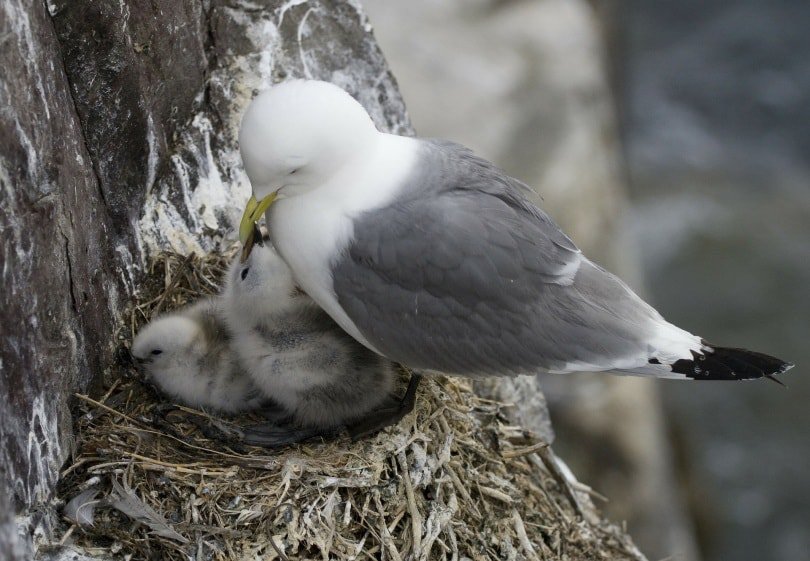Spring is a busy time of the year for wild birds with breeding, nest-building, and raising babies in full swing. As soon as baby birds emerge from their shells, they’re completely dependent on their parents for everything. Because they’re so vulnerable, baby birds have no choice other than to rely on their parents for food. Newly hatched baby birds cannot break down food which means their parents must partially digest the food to make it safe for their young to eat.
In the wild, baby birds eat the same food their parents eat which includes things like insects, seeds, and worms. When a bird parent hunts for food to feed its young, it will pick up an insect, worm, or seed, and eat the item. Upon returning to the nest, the bird will regurgitate what it just ate so as to soften the item before feeding it to its babies.

What to Feed a Wild Baby Bird
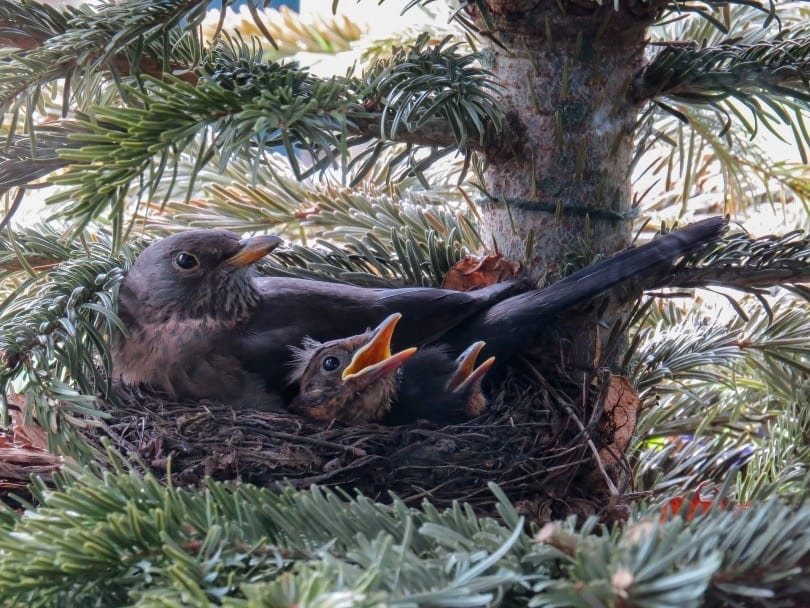
If you come across a baby bird in the wild that appears to be abandoned and in need of care, you may wonder what you should do. If possible, immediately contact a bird rescue organization near you to see what they advise. If this isn’t possible, you should do whatever you can to save the little bird.
An abandoned baby bird that can’t fly won’t survive long on the ground as it’s an easy target for a predator. If a predator like a cat, fox, or hawk doesn’t get the bird, it’s likely that it will die from dehydration or starvation. That’s why time is working against you when you find a baby bird that’s left on its own.
It’s possible that you can save the young bird by feeding it soft and spongy food that’s been soaked in water but not overly wet. But the first thing you should do is get that little bird up and off the ground. Carefully pick up the bird and place it in a box that’s lined with tissues, paper towel, or another soft material. If you can, take the bird to a quiet, safe location so you can feed it.
- Earthworms or nightcrawlers
- Waxworms
- Mealworms
- Canned or soaked dry cat or dog food
- Commercial finch food
Keep in mind that professional bird rehabbers tube feed baby birds. If you have a food dropper, great! Otherwise, you can cut a small corner from a baggie and put the softened food into the bag and slowly squeeze a tiny bit of it into the baby bird’s mouth. Do not force the food onto the baby and be patient. With any luck, the baby bird will accept the food you’re offering it, to increase its chances of survival.
Baby Birds Have Stringent Dietary Needs
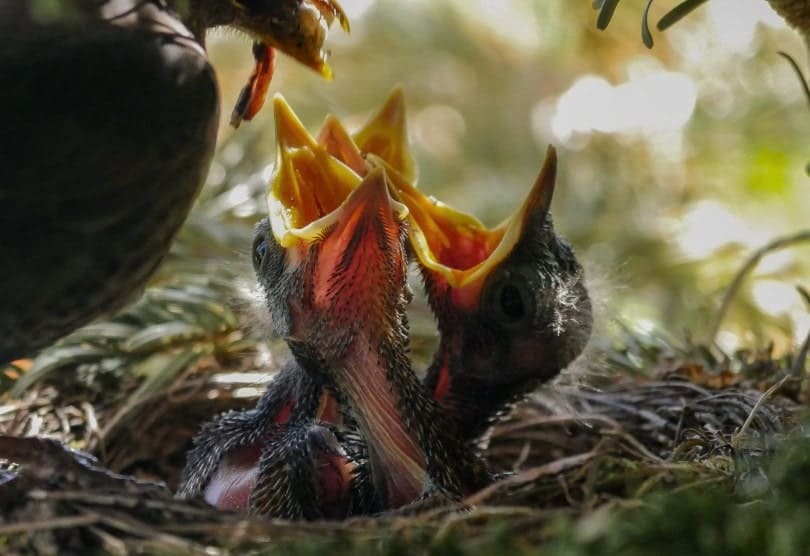
Baby birds are fed often by their parents. On average, they eat every 10 to 20 minutes for about 12-14 hours each day, depending on the species. The majority of their diet is made up of proteins which are primarily supplied by insects for healthy growth.
Even though it’s fine to try and save a baby bird by feeding it yourself, only a professional bird rehabber has the right food, equipment, supplements, and know-how to maintain such a stringent feeding regime. This means it would be best for that little bird to be taken to a bird rescue organization as soon as possible. A baby bird cannot live much longer than 24 hours without proper nutrition and care.
How to Tell if a Baby Bird is Orphaned

When you spot a young bird on the ground, your first response is probably to pick that bird up to help it. But before you take action and intervene, you should make sure that little bird actually needs your help.
A baby bird can be either a nestling or a fledgling, depending on its age. Most baby birds found on the ground are fledglings. These birds have recently left the nest, they can’t fly yet, and they’re under the watchful eye of their parents, and don’t need your help.
How to ID a Fledgling
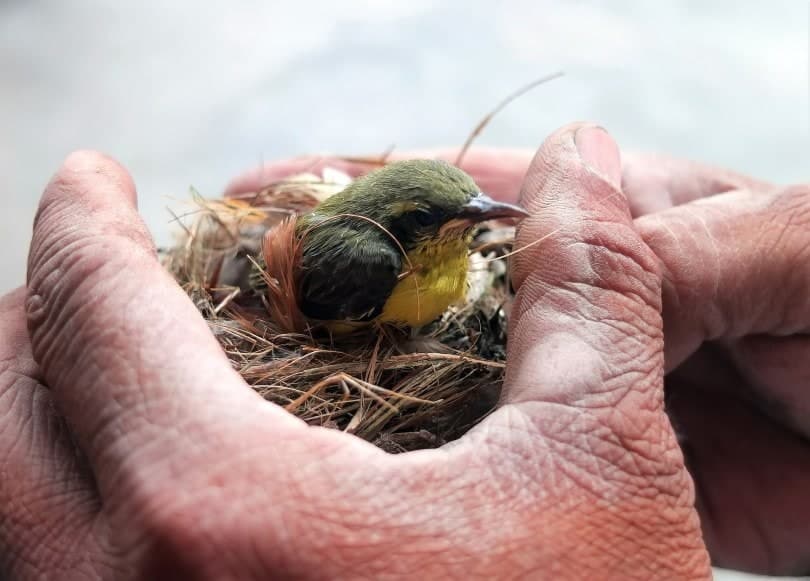
A fledgling is feathered and capable of hopping and flitting, and can tightly grip your finger or twig. A fledgling is a fluffy and affordable looking young bird with a short tail. There’s no reason to intervene when you find a fledgling on the ground, unless you want to get the bird out of harm’s way.
It’s fine to place a fledgling on a nearby branch to keep it away from pets like dogs or cats. But it won’t do any good to put a fledgling back in its nest because it will just hop out again.
It’s likely that this little bird’s parents are busy tending to other fledglings that are scattered around elsewhere. Before you know it, those parents will show up to tend to the fledgling you found.
How to ID a Nestling
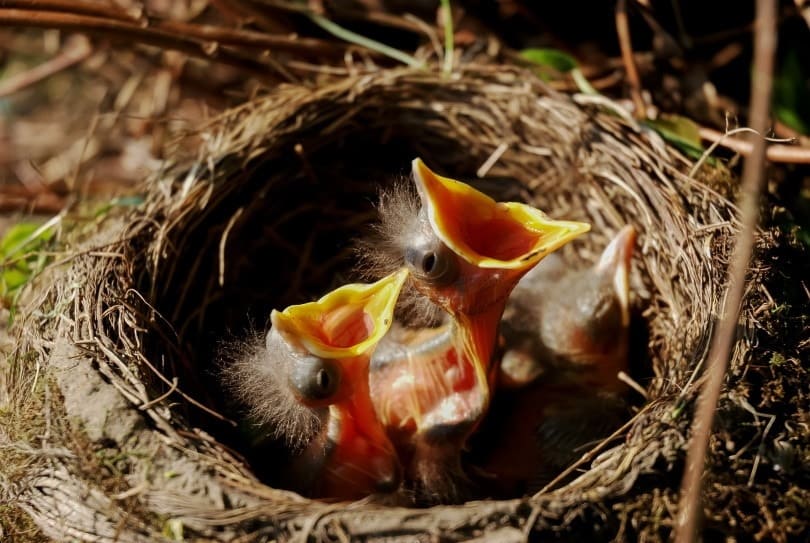
If the baby bird has very few feathers and cannot hop, flit, or grip your finger tightly, it’s a nestling that somehow got out of the nest. If you can find the nest nearby, put the nestling back in as soon as possible. Don’t believe the old wives’ tale that says bird parents will abandon their baby if it’s touched by humans, because it’s simply not true.
If you can’t find the nest, have found both parents dead, or are absolutely sure the baby bird is an orphan, then you should step in and help. As mentioned earlier, the best person to care for the nestling you found is a professional bird rehabilitator.

Conclusion
If you’ve ever wondered what baby birds eat, now you know—plus much more interesting information about our feathered friends in the wild.
Related read:
- What Do Quails Eat in the Wild and as Pets?
- How to Take Care of a Lost Baby Bird (Care Sheet & Guide)
- How to Locate a Wildlife Rehabilitator Near You
Featured Image Credit: sonywiz, Pixabay
